
Instituto Nacional de Investigación Agropecuaria

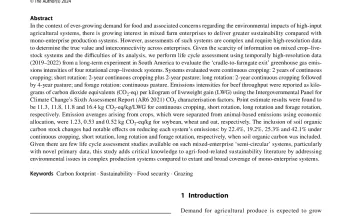
ABSTRACT.- In the context of ever-growing demand for food and associated concerns regarding the environmental impacts of high-input agricultural systems, there is growing interest in mixed farm enterprises to deliver greater sustainability compared with mono-enterprise production systems. However, assessments of such systems are complex and require high-resolution data to determine the true value and interconnectivity across enterprises.

ABSTRACT.- The aim of this study was to evaluate two levels of forage allowance (FA) during the prepartum period on metabolic, hormonal, productive, and reproductive variables in primiparous (P) and multiparous (M) beef cows. Six weeks before calving, 40 P and 42 M cows were assigned to two FA (native pastures) treatments until calving (day 0):High (15 kg DM/100 BW; H) and Low (5 kg DM/100 BW; L). After calving all cows were managed together. High FA cows presented greater intake than L cows, while M tended to have greater intake than P cows.
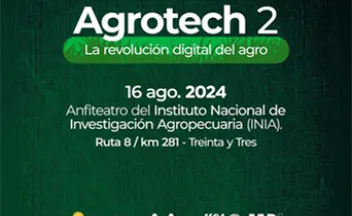

ABSTRACT.- Improvements in nitrogen use efficiency can be achieved through fertilizer management strategies that capitalize on nutrient synergies. However, limited research on synergies between nitrogen, sulfur, and calcium complicates understanding causal links and developing sustainable management. In this regard, the effects of different nitrogen sources on productivity and nitrogen use efficiency in Italian ryegrass (Lolium multiflorum Lam.) and pearl millet (Pennisetum glaucum (L.)), along with their impacts on forage quality and secondary production, were investigated.

ABSTRACT.- This review summarizes the status of the art of cow-calf relationships at birth and during lactation, including the physiological mechanisms throughout suckling/nursing and weaning which can impact on productive and reproductive parameters, social behaviour across the mother-offspring pairs, and the required positive cow-calf welfare approach in beef cattle. The time spent close to the calf after birth, latency to nurse, nursing time, grooming and vocalisations can be considered fair proxies of oxytocin release and maternal care during the neonatal period.
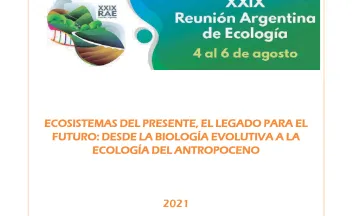
Eragrostis plana (capín Annoni) es una importante invasora de los pastizales del Río de la Plata, frecuentemente asociada a sitios con alto grado de estrés abiótico. En este trabajo se evaluó el estrés hídrico como generador de oportunidades para su invasión.
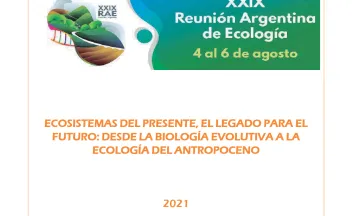
La liberación de fitotoxinas (alelopatía) puede ser un mecanismo clave en el proceso de invasión por plantas exóticas. En este trabajo se evaluaron los efectos fitotóxicos de las dos gramíneas invasoras con mayor destaque en los pastizales de Uruguay:Cynodon dactylon y Eragrostis plana.
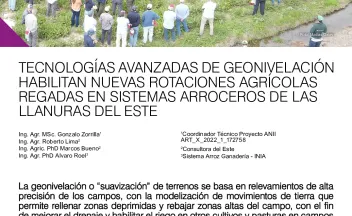
La geonivelación o "suavización" de terrenos se basa e en relevamientos de alta precisión de los campos, con la modelización de movimientos de tierra que permite rellenar zonas deprimidas y rebajar zonas altas del campo, con el fin de mejorar el drenaje y habilitar el riego en otros cultivos y pasturas en campos planos. En este artículo se presentan resultados parciales y avances en la adaptación de esta tecnología a las condiciones de las llanuras del este en la Cuenca de la Laguna Merín.